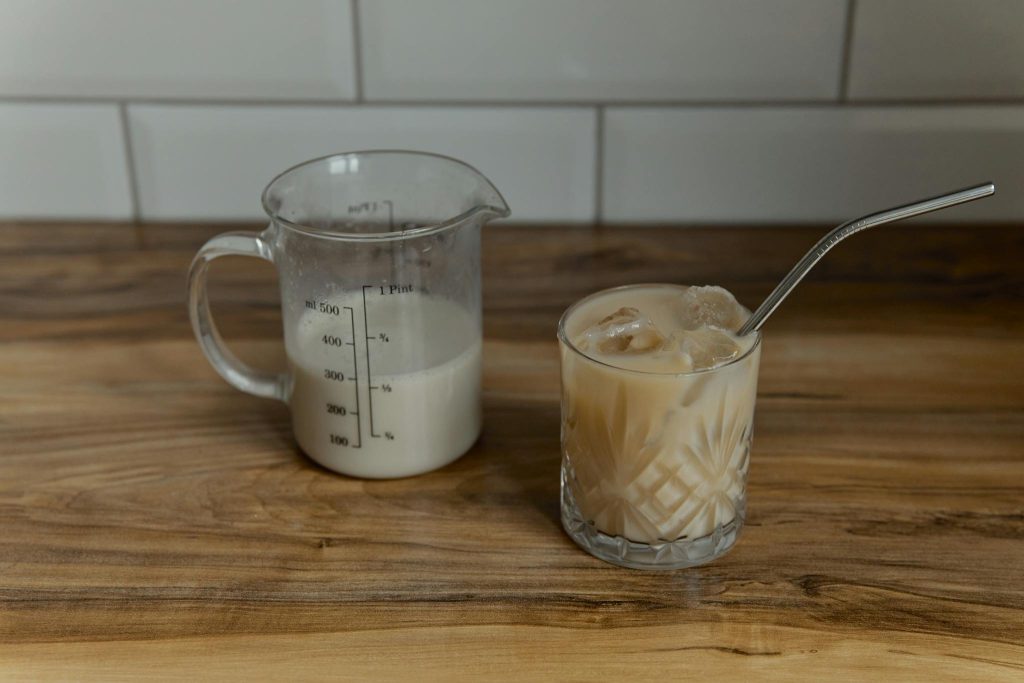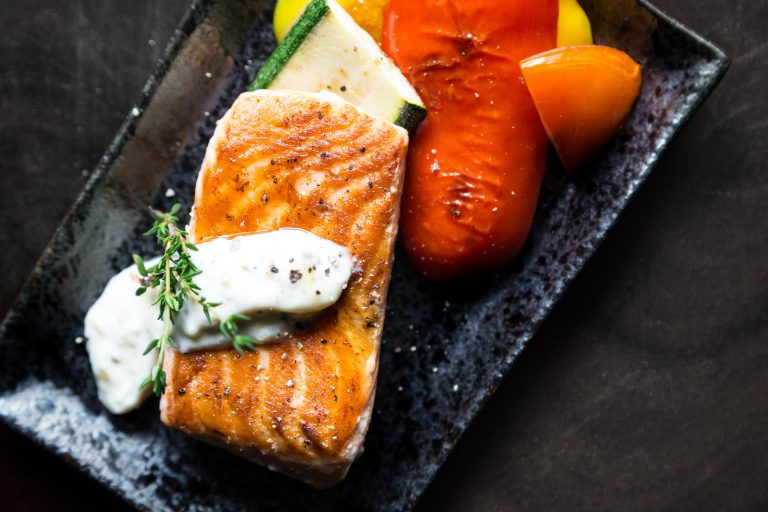How Many Calories Should You Eat on A Keto Diet
So you’ve started the ketogenic diet, ready to burn some fat and feel great, but there’s this nagging question hanging over your head… how many calories should you be eating on your new keto journey?
You’re not alone in asking this question.
You see, I’ve been through this journey myself, and figuring out the right balance of calories was tricky, but it doesn’t have to be for you.
💡 Quick tip: Calories are important but aren’t the only thing that matters on keto. Ensure you’re also focusing on the types of foods you’re eating and the macronutrient ratios (fats, proteins, and carbs!).
Now, let’s get down to business… we’ve all heard that age-old mantra “calories in vs. calories out,” right? And, for most diets, that’s the main focus.
But when it comes to keto, there’s a little more to it…
You still want to monitor your caloric intake, but and this is key it’s also important to maintain the right balance of fats, proteins, and (limited) carbs to stay in ketosis. This is what will really help you shed those pounds.
But back to the burning question; how many calories should you actually eat?
Well, it depends. Your optimal calorie intake will depend on factors like age, sex, weight, activity level, and specific goals.
So, when it comes to keto, it’s not a one-size-fits-all answer.
Determining Your Caloric Intake on a Keto Diet

The truth is, it varies depending on your individual needs. Your age, gender, activity level, and current weight all play a role in determining your caloric intake.
That being said, I’ll guide you through the process of finding the right number for you.
Step 1: Find Your Basal Metabolic Rate (BMR)
Your BMR is the number of calories your body needs to maintain its current functions at rest. There are many online calculators available to help you find this number. Just input your details, and voila, you’ll have your BMR.
Step 2: Factor in Activity Level
Now that you have your BMR, it’s time to take your activity level into account. You’ll find different multipliers based on your level of activity, which you’ll multiply with your BMR. For example, if you’re sedentary, your multiplier might be 1.2, while if you’re moderately active, it could be around 1.6.
Step 3: Consider Your Goals
Are you trying to lose weight, maintain, or gain muscle? Depending on your goals, you may need to adjust your caloric intake accordingly. If you’re looking to lose weight, try reducing your daily intake by 300-500 calories.
On the other hand, if you want to gain muscle, aim for a surplus of 200-300 calories per day.
Now, I know all of this might sound overwhelming, but trust me, it gets much easier once you get into the swing of things.
Factors to Consider for Caloric Intake on a Keto Diet
Determining how many calories you should eat on a keto diet can be a bit tricky since there are a number of factors to consider. But don’t worry, I’ve got you covered! Here are some aspects to consider in order to find your ideal keto calorie intake:
- Your age, gender and body composition: Age and gender play a significant role in determining your calorie needs. With age, our metabolism slows down and requires fewer calories. Gender also affects caloric needs, with men generally needing more calories than women. Lastly, having more muscle mass boosts your metabolism, which means you’ll need more calories to maintain your weight.
- Your activity level: Are you more of a couch potato or a gym rat? Your activity level significantly affects how many calories you need. The more physically active you are, the more calories you’ll need to fuel your body.
- Your weight loss goals: It’s important to be realistic about your weight loss goals when setting your calorie intake. If you aim for a faster weight loss, you’ll need to create a larger calorie deficit by consuming fewer calories. However, if you’re focusing on a slower, more sustainable weight loss journey, you can go for a smaller calorie deficit.
Calculating Your Keto Calorie Intake
Now that you know what factors to consider, let’s calculate how many calories you should consume on a keto diet. We can use the following three-step process:
- Calculate your Basal Metabolic Rate (BMR) using the Mifflin-St Jeor equation:
For men: BMR = (10 * weight in kg) + (6.25 * height in cm) – (5 * age) + 5
For women: BMR = (10 * weight in kg) + (6.25 * height in cm) – (5 * age) – 161
This equation gives you the number of calories needed to keep your body functioning at rest. It’s a great starting point to understand your basic caloric needs.
After calculating your BMR, the next step is to incorporate your activity level. This is crucial because it will adjust your caloric needs based on how much energy you expend daily. Here’s a simple guide to help you estimate:
- Sedentary (little or no exercise): BMR * 1.2
- Lightly active (light exercise/sports 1-3 days/week): BMR * 1.375
- Moderately active (moderate exercise/sports 3-5 days/week): BMR * 1.55
- Very active (hard exercise/sports 6-7 days a week): BMR * 1.725
- Extra active (very hard exercise/sports & a physical job): BMR * 1.9
By multiplying your BMR with the appropriate activity factor, you get your Total Daily Energy Expenditure (TDEE). This is the total number of calories you need to maintain your current weight.
But wait, there’s more!
Remember, if your goal is weight loss or muscle gain, you need to adjust your calorie intake accordingly.
For weight loss, create a deficit by eating fewer calories than your TDEE. For muscle gain, aim for a surplus.
Let’s put this into action with an example. Say you’re a moderately active 30-year-old woman, 5’6” tall, weighing 150 pounds (68 kg), and your goal is to lose weight.
- Calculate BMR: (10∗68)+(6.25∗167.64)−(5∗30)−161(10∗68)+(6.25∗167.64)−(5∗30)−161 (weight in kg, height in cm)
- Factor in activity level: Multiply BMR by 1.55 (moderately active)
- Adjust for weight loss: Reduce the total by 300-500 calories.
Remember, these calculations provide estimates. Everyone’s body is unique, and factors like metabolism, muscle mass, and overall health play a role. It’s always a good idea to consult with a healthcare professional, especially when starting a new diet.
Also, don’t forget that tracking your macros is just as important as counting calories on a keto diet. Keeping your carb intake low, protein moderate, and fat high is essential to enter and maintain ketosis.
My Personal Keto Calorie Intake: A Case Study
I want to share my personal experiences with my daily keto calorie intake, to give you an idea of how this process can work for you.
I’m a 5’6″, moderately active woman. My BMR is around 1,450 calories. Taking into account my activity level, I determined my daily caloric needs to be around 2,100 calories.
Since I wanted to lose some weight, I aimed for a daily intake of about 1,600 to 1,800 calories. This put me at a moderate caloric deficit, enough to see steady weight loss without feeling deprived or lethargic.
It’s important to note that not all calories are created equal, especially on a keto diet. While maintaining a calorie deficit is important for weight loss, the quality of the calories you consume is equally crucial.
On keto, most of your calories should come from healthy fats, followed by a moderate amount of protein and minimal carbs.
Crafting the Perfect Keto Meal Plan Once I had my caloric goals in place, the next step was to plan my meals. I focused on nutrient-dense foods that were high in fat and low in carbs. My typical day on keto might look something like this:
- Breakfast: A spinach and cheese omelette cooked in butter, with a side of avocado.
- Lunch: Grilled salmon salad with olive oil dressing.
- Snack: A handful of almonds or a piece of cheese.
- Dinner: Cauliflower rice stir-fry with chicken thighs and lots of veggies.
- Dessert (occasionally): A small serving of keto-friendly dessert like a berry and cream cheese mousse.
Of course, this is just a sample. Your meal plan can vary based on your taste preferences, dietary restrictions, and goals.
The key is to find foods that you enjoy, that also fit within your macro and calorie goals.
Adjusting as You Go
As I progressed with my keto journey, I made sure to listen to my body and adjust my intake as needed. There were days when I felt more hungry, so I might add a bit more protein or fat to my meals.
Other days, I wasn’t as hungry, so I’d eat a little less.
It’s also crucial to reevaluate your caloric needs periodically, especially if you’re experiencing significant weight loss or changes in activity levels. Your body’s requirements can change over time, and it’s important to adapt your diet accordingly.
In Conclusion: A Personalized Approach
Determining your caloric intake on a keto diet requires a bit of math and a lot of listening to your body.
It’s not a one-size-fits-all approach; it’s a personalized journey.
With the right knowledge and tools, you can find the perfect balance that helps you achieve your health and weight goals while enjoying delicious, satisfying meals.
Remember, keto is not just a diet; it’s a lifestyle change that can lead to better health and a more fulfilling way of living







